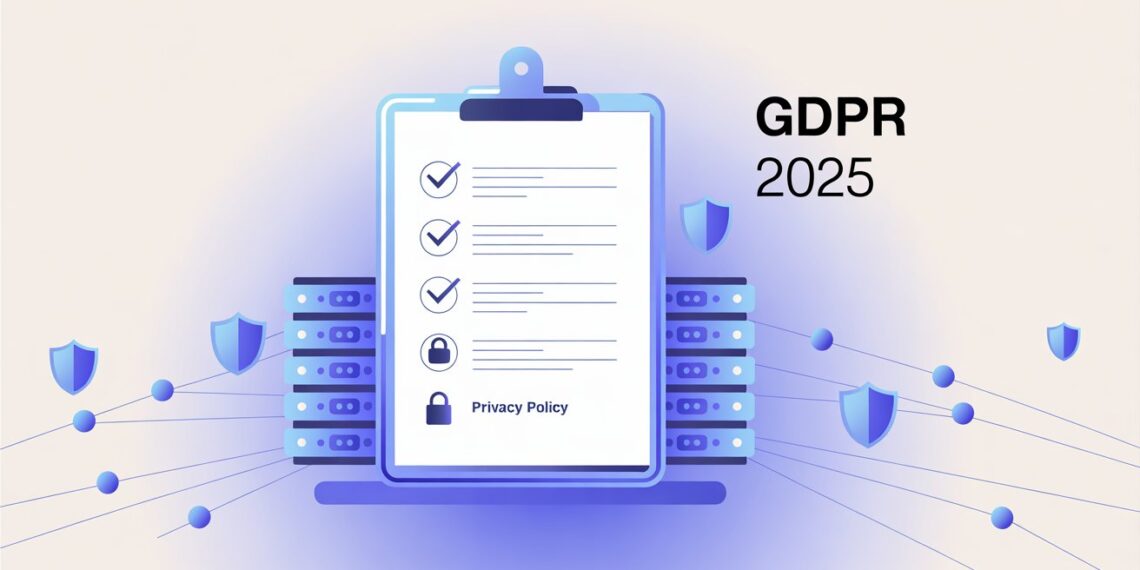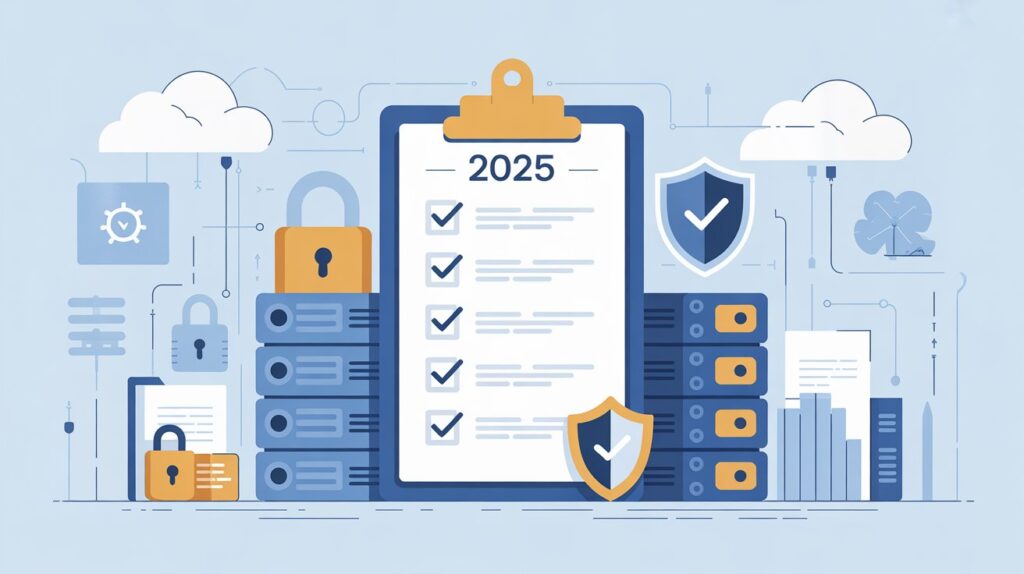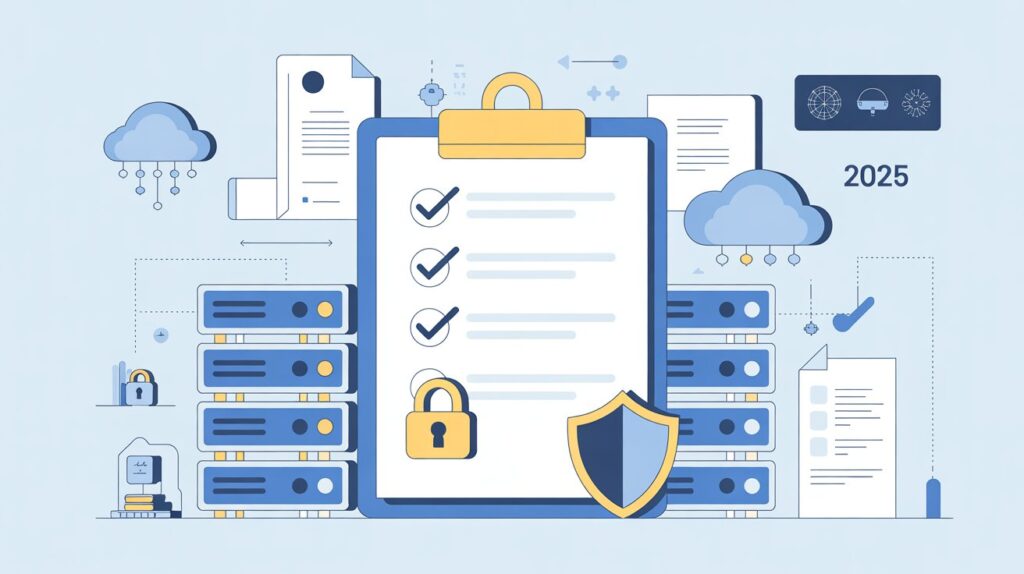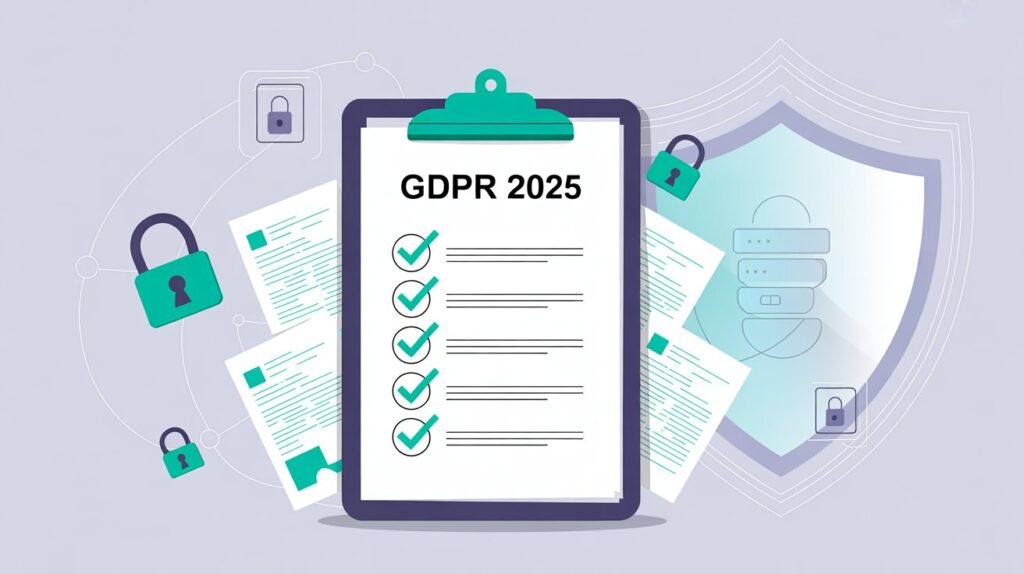As we approach 2025, GDPR compliance remains a critical priority for businesses handling personal data of EU residents. The General Data Protection Regulation (GDPR), which came into effect in 2018, continues to influence how organizations collect, process, store, and protect personal information. Over time, regulatory bodies such as the European Data Protection Board (EDPB) have updated guidelines, making it essential for businesses to stay informed.
Non-compliance can result in severe financial penalties, reputational damage, and legal challenges. Therefore, understanding the requirements and proactively implementing measures is crucial. This comprehensive guide provides a step-by-step GDPR Compliance Checklist for 2025 to help businesses of all sizes navigate the evolving landscape of data protection.
By following this checklist, organizations can not only avoid penalties but also build trust with customers by demonstrating a commitment to safeguarding their personal data.
Understanding GDPR Compliance
What is GDPR?
The General Data Protection Regulation (GDPR) is an EU law designed to protect the personal data and privacy of individuals within the European Union (EU) and the European Economic Area (EEA). Beyond protecting individuals, GDPR also regulates the export of personal data outside these regions.
GDPR sets out strict rules for data collection, storage, processing, and sharing. Its main objectives are:
-
Giving individuals control over their personal data.
-
Simplifying the regulatory environment for international business.
-
Establishing clear guidelines on lawful processing of data.
Organizations must ensure they comply with GDPR principles, including lawfulness, fairness, transparency, purpose limitation, data minimization, accuracy, storage limitation, integrity, confidentiality, and accountability.
Who Needs to Comply?
Any organization, regardless of location, that processes personal data of EU residents is required to comply with GDPR. This includes:
-
Companies offering products or services to EU customers.
-
Businesses monitoring the behavior of EU individuals, such as tracking website activity.
-
Organizations processing sensitive data, such as health or financial information.
Even small businesses and startups must pay attention, as GDPR fines are proportional to the severity of non-compliance and can reach up to €20 million or 4% of global annual turnover.
GDPR Compliance Checklist for 2025
1. Data Mapping and Inventory
A fundamental step in GDPR compliance is understanding what personal data your organization processes and where it resides.
-
Conduct a Data Audit: Begin by identifying all data collected, including emails, names, addresses, payment information, and online behavior. Review internal databases, cloud storage, and paper records.
-
Classify Data: Categorize data based on sensitivity, such as basic contact details, financial data, or special categories like health information.
-
Maintain a Record of Processing Activities (RoPA): GDPR Article 30 requires detailed documentation of processing activities, including data types, purposes, recipients, and retention periods.
Example: If your company uses customer data for email marketing, document what data is collected, how it’s stored, how long it’s retained, and whether third-party services are involved.
2. Establish a Legal Basis for Data Processing
Every processing activity under GDPR must have a legal justification. Article 6 provides six lawful bases:
-
Consent – Individuals actively agree to data processing.
-
Contractual necessity – Processing is required to fulfill a contract.
-
Legal obligation – Data must be processed to comply with the law.
-
Vital interests – Processing protects life or safety.
-
Public task – Data processing is necessary for official functions.
-
Legitimate interests – Data processing is necessary for business interests that do not override individual rights.
Document the rationale for each activity, explaining why the chosen legal basis applies.
3. Data Subject Rights Management
GDPR empowers individuals with several rights regarding their personal data. Organizations must implement procedures to honor these rights efficiently.
-
Right to Access: Allow individuals to request and receive copies of their personal data.
-
Right to Rectification: Ensure mechanisms exist for correcting inaccurate or incomplete data.
-
Right to Erasure (Right to be Forgotten): Delete personal data when requested, unless legal obligations require retention.
-
Right to Restriction of Processing: Enable individuals to limit the use of their data.
-
Right to Data Portability: Provide data in a structured, machine-readable format for transfer to other services.
-
Right to Object: Allow individuals to object to data processing, including direct marketing.
Tip: Establish a dedicated data protection contact or portal to streamline requests and maintain compliance.
4. Consent Management
Consent remains a critical aspect of GDPR compliance. Organizations must obtain and manage consent carefully.
-
Obtain Explicit Consent: Consent must be freely given, specific, informed, and unambiguous.
-
Implement Consent Mechanisms: Avoid pre-ticked boxes or vague statements. Use clear opt-in methods.
-
Maintain Consent Records: Keep logs of consent, including when and how it was obtained, and for what purpose.
-
Facilitate Withdrawal: Provide easy ways for individuals to withdraw consent at any time.
Example: A website subscription form should include a clear statement about data usage and a checkbox (not pre-checked) to agree to terms.
5. Data Protection Impact Assessments (DPIAs)
DPIAs are necessary for processing activities that may significantly affect individual privacy.
-
Conduct DPIAs: Identify processing that poses high risks, such as large-scale profiling or sensitive data processing.
-
Mitigate Risks: Assess potential impacts and implement measures to reduce risks.
-
Consult Authorities: When high-risk processing cannot be sufficiently mitigated, consult with Data Protection Authorities (DPAs).
6. Data Security Measures
Protecting personal data is a cornerstone of GDPR.
-
Implement Security Controls: Use encryption, pseudonymization, secure access protocols, and regular backups.
-
Regular Audits: Conduct periodic security assessments to identify vulnerabilities.
-
Incident Response Plan: Develop a comprehensive plan for data breaches, including internal reporting and notification to regulators within 72 hours.
Example: A cloud storage solution should encrypt data both in transit and at rest to prevent unauthorized access.
7. Third-Party Management
Many businesses rely on third-party services to process data. Ensuring these partners comply with GDPR is crucial.
-
Due Diligence: Evaluate third-party vendors’ GDPR compliance and data protection practices.
-
Data Processing Agreements (DPAs): Legally binding contracts should define responsibilities and obligations regarding data protection.
-
International Transfers: Ensure safeguards like Standard Contractual Clauses (SCCs) or Binding Corporate Rules (BCRs) are in place for cross-border data transfers.
8. Data Protection Officer (DPO)
Some organizations are required to appoint a Data Protection Officer.
-
Appoint a DPO: Mandatory for public authorities, organizations engaging in large-scale systematic monitoring, or handling sensitive data.
-
DPO Responsibilities: Monitor GDPR compliance, advise on obligations, conduct staff training, and liaise with DPAs.
-
DPO Independence: Ensure the DPO can perform tasks without interference.
9. Employee Training and Awareness
Employees are a critical line of defense in data protection.
-
Regular Training: Provide role-specific GDPR training to ensure awareness of compliance obligations.
-
Awareness Programs: Share newsletters, workshops, or intranet updates to reinforce data protection culture.
-
Incident Reporting: Encourage immediate reporting of suspected breaches to prevent escalation.
10. Documentation and Record-Keeping
GDPR requires meticulous documentation of all processing activities.
-
Maintain Records: Keep logs of processing activities, DPIAs, consent forms, and security measures.
-
Review and Update: Update documentation to reflect new processes, technologies, or regulatory guidance.
-
Audit Trails: Maintain a clear trail for critical processing operations, which is essential for accountability and audits.
Advanced Tips for 2025 Compliance
-
Privacy by Design: Integrate data protection into every stage of product and process development.
-
Regular Policy Updates: Monitor regulatory updates to ensure internal policies remain current.
-
Leverage Technology: Use data management and compliance tools to streamline consent management, data access requests, and breach notifications.
-
Engage Legal Expertise: Consult GDPR specialists for complex processing activities to minimize risks.
Frequently Asked Questions (FAQs)
What are the penalties for non-compliance with GDPR?
Organizations found in breach of GDPR can face fines of up to €20 million or 4% of global annual turnover, whichever is higher. Non-compliance can also damage reputation and customer trust.
Do non-EU businesses need to comply with GDPR?
Yes. Any business outside the EU that processes personal data of EU residents, particularly for offering goods or services or monitoring behavior, must comply with GDPR.
Is appointing a Data Protection Officer mandatory?
It depends. Public authorities, organizations involved in large-scale monitoring, or processing sensitive data must appoint a DPO. Other businesses can do so voluntarily to strengthen compliance.
How often should GDPR compliance be reviewed?
GDPR compliance should be reviewed at least annually and whenever there is a significant change in data processing, new technology, or regulatory guidance.
Conclusion
Achieving GDPR compliance in 2025 requires a proactive, systematic approach. By following this GDPR Compliance Checklist for 2025, organizations can ensure they meet legal obligations, protect personal data, and build customer trust.
Compliance is not a one-time task—it requires continuous monitoring, regular audits, staff training, and adaptation to evolving regulations. Organizations that embrace a culture of privacy and transparency are better positioned to mitigate risks, avoid penalties, and strengthen their reputation in a data-driven world.
By implementing these practices, businesses can confidently navigate GDPR requirements, protect sensitive data, and remain competitive in the European market.












